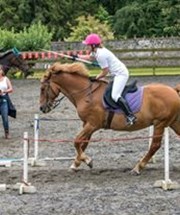Cleaning and disinfecting after a COVID outbreak in your school
Cleaning and disinfecting after a COVID outbreak in your school

Government and parents are both advocating for in-person learning this school year, keeping schools open and safe for students and staff is a top priority. Unfortunately, no matter how good your school's infection prevention strategy and how many mitigation layers it contains, COVID 19 outbreaks and school closures are on the rise, with schools across the country temporarily shutting down as infection rates soar in their classrooms and communities.
Factors outside of your control – the increased transmission of the Delta variant, low vaccination rates in some areas, and lack of universal masking in many school and community settings have sent tens of thousands of students and staff members across our country into isolation and quarantine just as the new school year started. While you can't control many of these, fortunately, your facility's approach toward cleaning and disinfecting contaminated surfaces is within your control.
We all know by now that COVID-19 is mainly spread through the air, and the risk of getting the virus by touching a contaminated surface is generally low, so regular surface cleaning and disinfection, focusing on high-touch surfaces, is adequate under most circumstances. However, if a person suspected to be sick or someone who tested positive for COVID-19 has been in your facility, the risk of surface contamination may be higher. The Centres for Disease Control and Prevention (CDC) recommends higher levels of cleaning and disinfecting in areas sick people have occupied. This is especially important if the universal and correct wearing of face masks is not in place in your school or if vaccination rates are low since the risk of transfer of germs from contaminated hands to surfaces may be especially high in these cases.
So, what should you do after someone with a suspected or confirmed COVID-19 case was in your school building? The short answer is – it depends on the circumstances. Here are a few possible scenarios and CDC's expert guidance for cleaning and disinfection under those circumstances:
1. If less than 24 hours have passed following a suspected or confirmed COVID-19 case, all surface cleaning and disinfection should be enhanced. Even if the case is only suspected, don't wait for testing to confirm: the lag between testing and results creates a risk that the virus will spread to other staff and students. In this case, the CDC recommends the following steps:
- Cleaning staff should be told immediately about any suspected or confirmed cases.
- Areas visited or touched by the person who is sick (e.g. classrooms, restrooms, common areas, shared equipment) should be immediately closed off and not used until they are disinfected.
- After closing off the areas, wait as long as possible before cleaning and disinfecting to reduce the risk of infection.
- Thoroughly clean and disinfect all surfaces in areas visited or used by the sick person – both high-touch surfaces (see #2 below) and less-frequently-touched surfaces.
- While cleaning and disinfecting:
- Open doors and windows and use fans or HVAC to increase air circulation.
- Vacuum the space if needed, using a high-efficiency particulate air (HEPA) filter or a SEBO vaccum with S-Class filtration.
- Use proven surface disinfectant products according to the instructions on the product label, including keeping the surface wet for the indicated period of time to kill the SARS-CoV-2 virus that causes COVID-19.
- In addition to any personal protective equipment (PPE) needed to safely use your cleaning products, use a mask and gloves to reduce the risk of COVID-19 transmission.
- After cleaning and disinfecting:
- Avoid touching any clean surfaces or your skin to avoid cross-contamination.
- Remove gloves and any other potentially contaminated PPE and dispose of them properly.
- Wash your hands thoroughly before leaving the area.
- Use clear signage and communications identifying spaces closed for disinfecting and spaces safe to re-enter to help prevent the spread of infection.
- The CDC recommends regular cleaning and disinfection of high-touch outdoor surfaces made of plastic or metal that may be contaminated. The widespread use of disinfectants on outdoor wooden surfaces is discouraged.
2. If more than 24 hours have passed since the person who is sick or diagnosed with COVID-19 has been in the space, the use of regular cleaning products should be adequate for most surfaces.
- Disinfection should focus on frequently touched surfaces such as door handles, keypads, water fountains, student desktops, elevator buttons, restroom surfaces, shared objects, phones, computer mice, and stair railings.
- Facilities may also consider eliminating high-touch areas, where possible, by temporarily removing shared items and difficult-to-disinfect items like fabric-covered chairs and rugs.
3. If more than 3 days have passed since the person who is sick or diagnosed with COVID-19 has been in the space, no additional cleaning (beyond your facility's regular cleaning and disinfection practices) is needed. As we continue our journey through the remainder of the 2021/22 school year, developing and implementing an infection prevention plan that clearly addresses containment procedures will help minimise the impact of outbreaks and closures. The plan should specify an emergency communications procedure if there is a suspected COVID-19 case in the building. It's also important to implement new guidance as changes occur and further information is available and follow government guidance.

Comments
Post a Comment